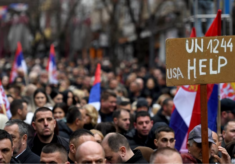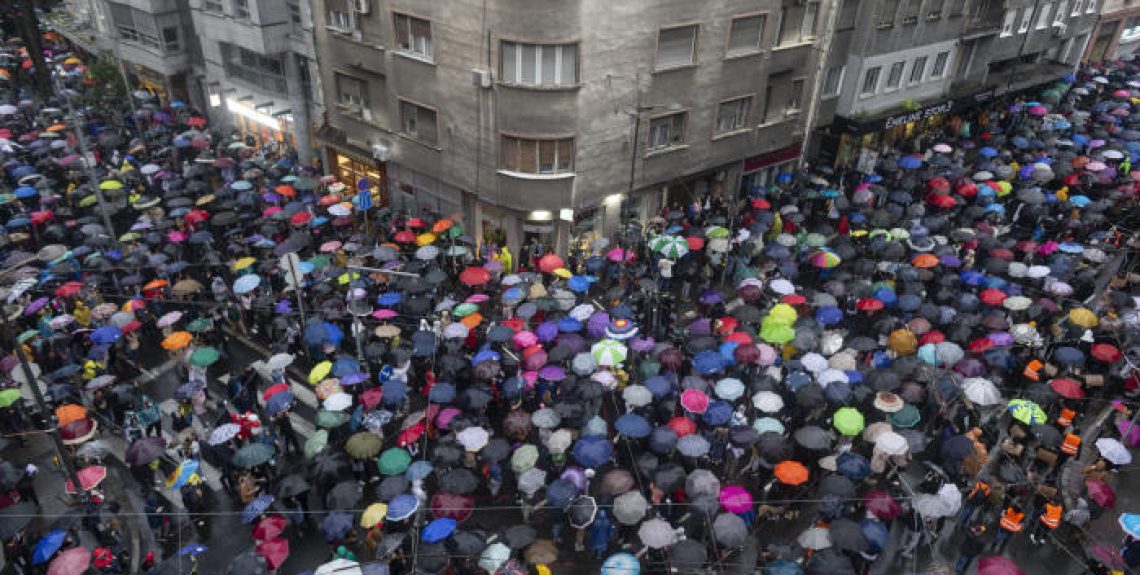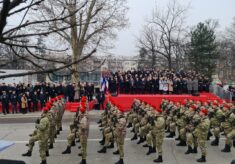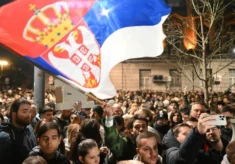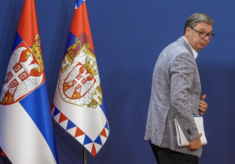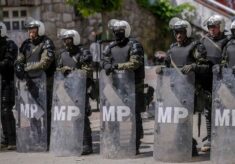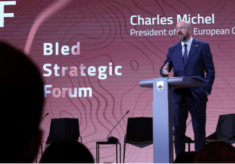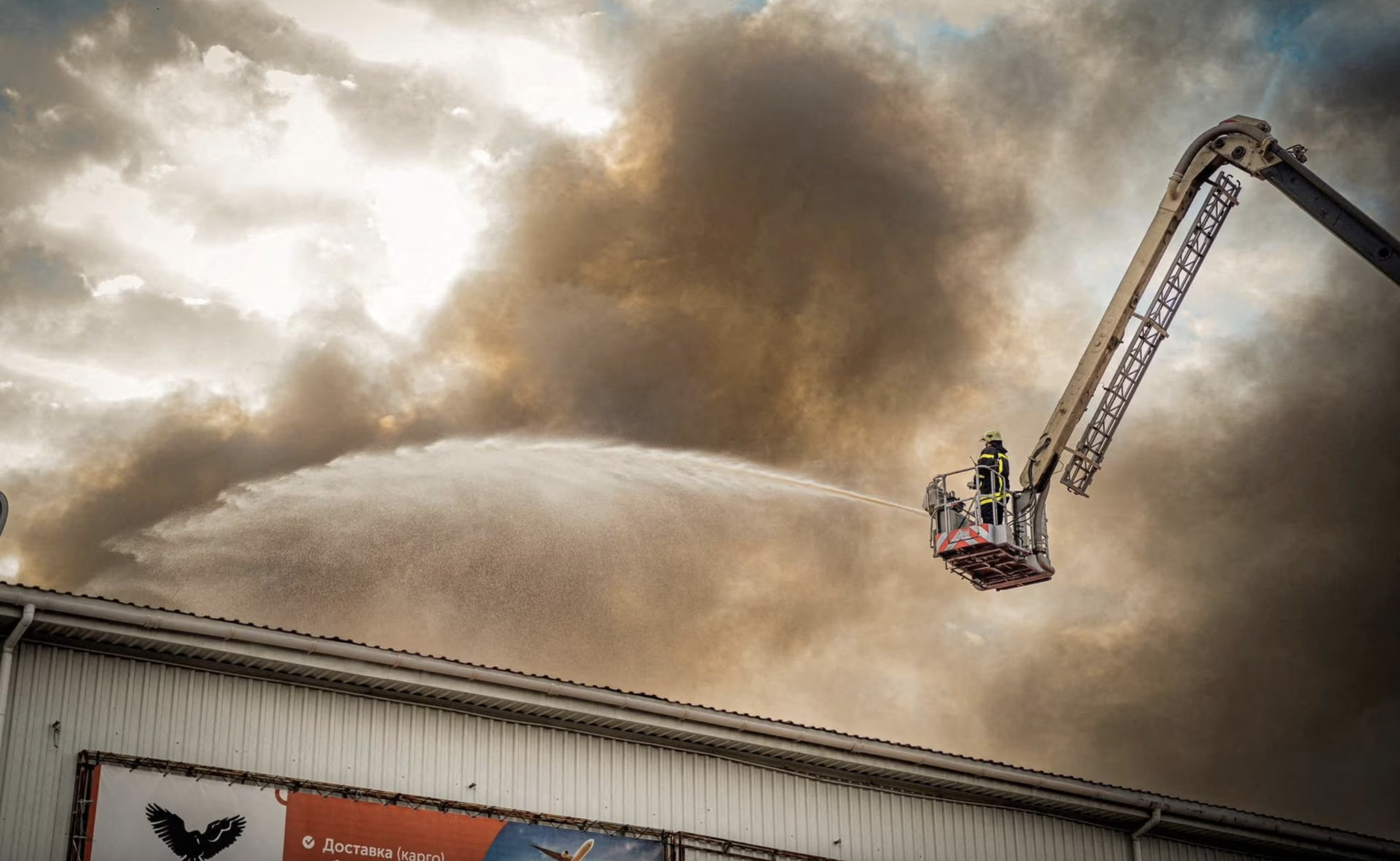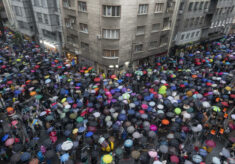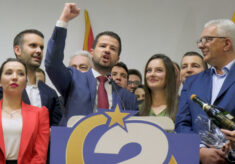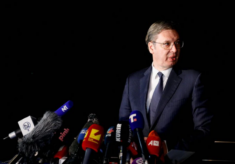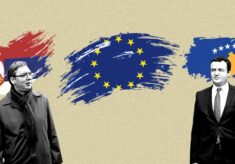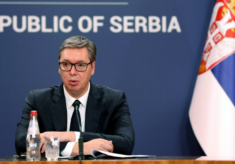Serbia and Kosovo both entered a phase of intensive internal destabilisation in May, for different reasons. The current situation suggests that the two Balkan countries, Serbia in particular, may be entering a new phase of crisis with unforeseeable negative consequences, while Kosovo is risking to be isolated even by the closest allies.
Serbia was shaken by two violent crimes, the most violent in its recent history, at the beginning of May. On the 3rd of May, a 13-year-old boy opened fire in his elementary school in down-town of Belgrade, killing nine classmates and the school guardian. Two days after, another young man killed nine people with an automatic rifle in two villages near city of Mladenovac. Protests erupted in Belgrade and other cities in response to these violent acts, with tens of thousands of people taking to the streets to condemn gun violence and the government’s policies over the last decade.
Demonstrators and opposition parties, in particular, claimed that President Aleksandar Vucic and the Serbian government contributed to a climate of intolerance and violence by using pro-government media to silence critics and opposition. The protests began peacefully but quickly became problematic for those in power, with demonstrators twice blocking a highway bridge and gathering in front of the headquarters of Serbia’s public broadcaster RTS. The pro-European opposition blamed President Aleksandar Vucic and his party for the shootings, and the protests became quickly politicised. They demanded the resignations of President Vucic, Interior Minister Bratislav Gasic and the director of Serbia’s Security Intelligence Agency (BIA), the pro-Russia Aleksandar Vulin, as well as greater media freedoms.
After Belgrade witnessed in May the largest anti-government demonstrations since the fall of Slobodan Milosevic in 2000, Vucic responded by organising a mass counter-demonstration, rallying tens of thousands of supporters in the capital, many of whom had been, as usual, bussed in from the countryside. In addition, he resigned as President of the Progressive Party, anticipating the formation of a new political movement. However, the protesters appeared unconcerned by the authorities’ response and promised to continue rallying until a regime change occurred, implying that Serbia may be entering one of the most volatile periods in the last decade. Despite Vucic’s show of strength and support, the protests are likely to continue into June, with a serious impact on the political scene.
Meanwhile, due to the contentious administrative elections held in the north of Kosovo on the 23rd of April, a new front opened at the end of May also in Kosovo. The main Kosovo Serb party, the Serbian List, boycotted the elections, and the turnout was only 3,47 percent. The Serb List called for a boycott of the elections because Belgrade’s key demands, including the formation of the Association of Serbian Municipalities (ASM) and the withdrawal of Kosovo’s special forces from the country’s north, had not been met. The results showed that Kosovo Prime Minister Albin Kurti’s Vetevendosje (Self-Determination) party won the mayoral races in North Mitrovica and Leposavic, while the opposition Democratic Party of Kosovo won in Zvecan and Zubin Potok. The low turnout immediately raised questions about the legitimacy of the election results, as well as the impact on future relations between Belgrade and Pristina.
However, Kosovo’s Prime Minister, Albin Kurti, decided to go ahead with the installation of ethnic Albanian mayors in the north, who were sworn in with the protection of the country’s police (KP) and police special forces (ROSU). This sparked new large-scale protests by Serbs in the north. The appointment of ethnic Albanian mayors has sparked outrage also in the United States and the European Union, with the US even evoking political sanctions against Kosovo and the so-called ‘Quint’ condemning the moves of Pristina. Finally, on the acme of the crisis, on the 29th of May KFOR soldiers in riot control deployment clashed with Serb protesters in Kosovo. More than 70 people were injured, including 30 NATO military personnel (among which Italians, from the biggest contingent, and Hungarians). The protests continued afterwards, peacefully.
The combination of ongoing anti-government protests in Serbia and escalating tensions in northern Kosovo poses a significant risk of regional destabilization and threatens to derail the dialogue between Belgrade and Pristina, which has been making important progress in the past months. Additionally, the increasingly radical actions of Prime Minister Kurti in Kosovo could result in a complete failure to implement the agreements reached earlier this year, both in Brussels and Ohrid. Meanwhile, in Belgrade, the hold on power by President Vucic, who has been supported by the West as a promoter of a normalization agreement with Pristina, appears to be facing significant challenges.
